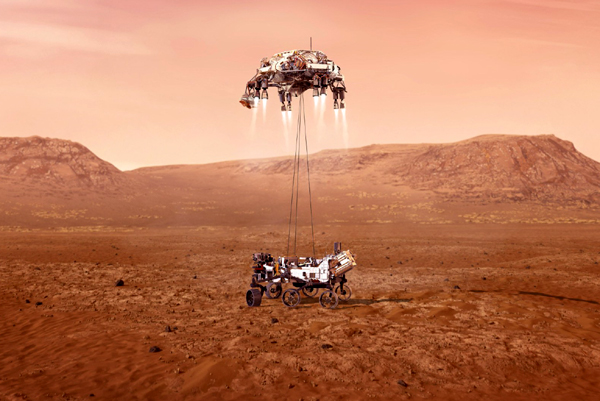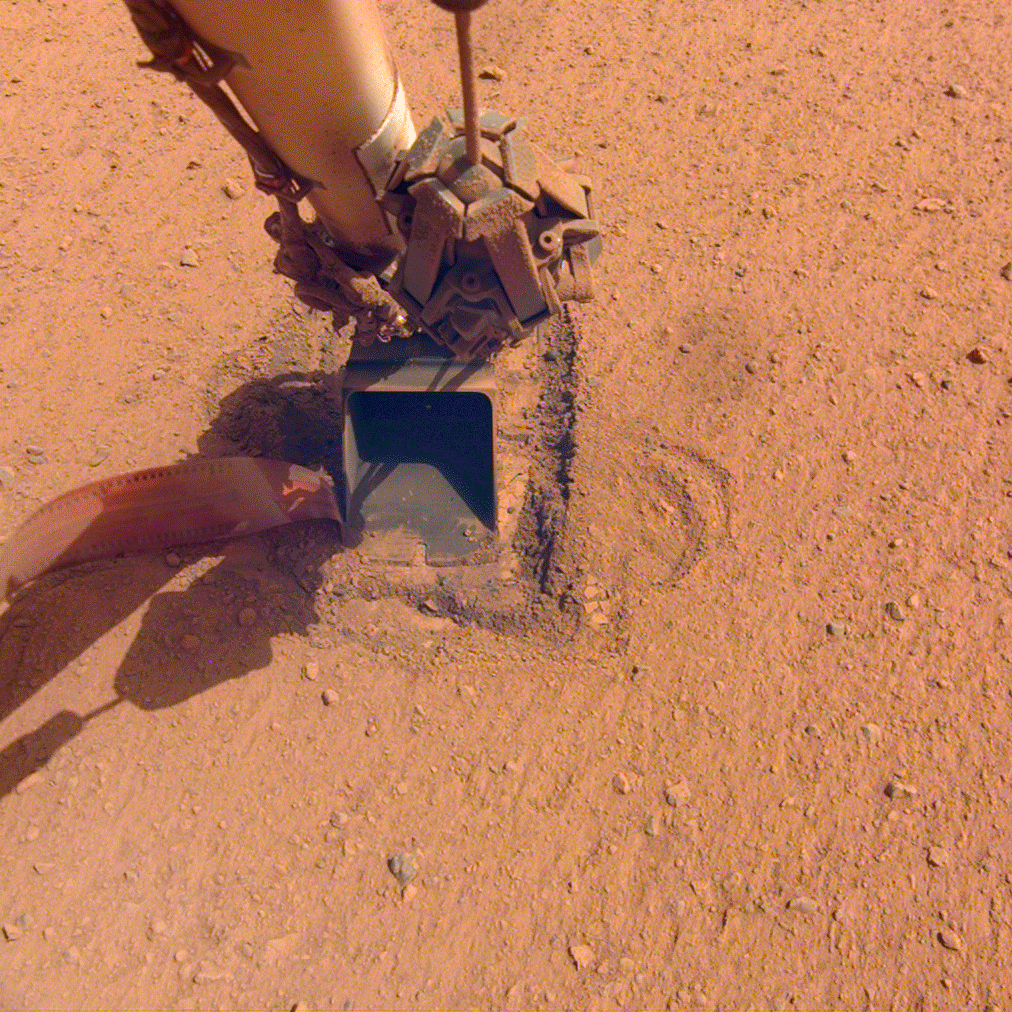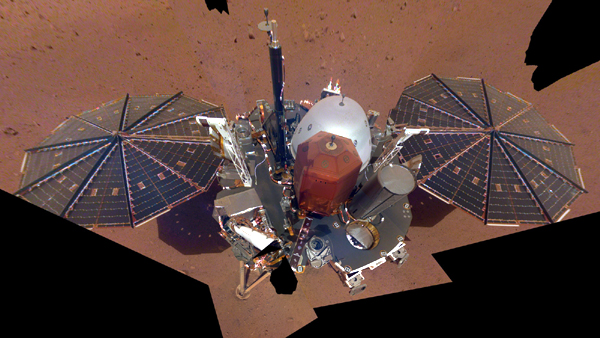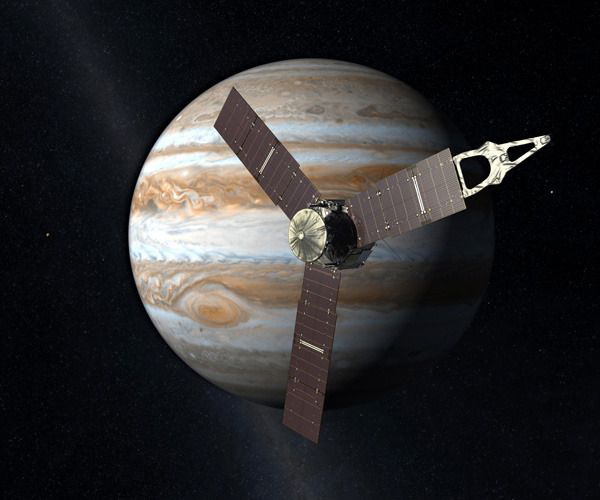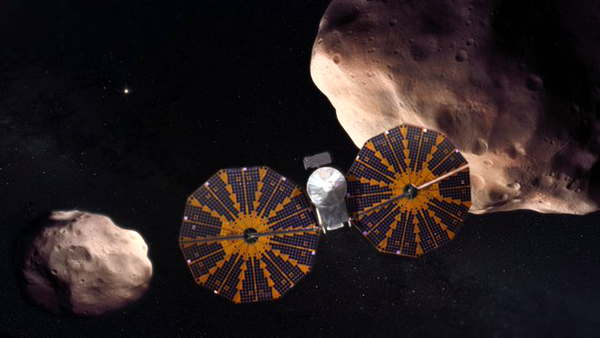 Caltech / R. Hurt (IPAC)
Discovery Alert: A Forgotten Planet Found in a Triple-Star System (News Release - January 12)
Caltech / R. Hurt (IPAC)
Discovery Alert: A Forgotten Planet Found in a Triple-Star System (News Release - January 12)
Shortly after NASA's
Kepler mission began operations back in 2009, the space telescope spotted what was thought to be a planet about half the size of Saturn in a multiple-star system. KOI-5Ab was only the second planet candidate to be found by the mission, and exciting as it was at the time, it was ultimately set aside as Kepler racked up more and more planet discoveries.
By the end of the spacecraft’s operations in 2018, Kepler had discovered a whopping 2,394 exoplanets, or planets orbiting stars beyond our sun, and an additional 2,366 exoplanet candidates that would still need confirmation.
“KOI-5Ab got abandoned because it was complicated, and we had thousands of candidates,” said David Ciardi, chief scientist of NASA's Exoplanet Science Institute. “There were easier pickings than KOI-5Ab, and we were learning something new from Kepler every day, so that KOI-5 was mostly forgotten.”
Now, after a lengthy hunt that spanned many years and many telescopes, Ciardi said he has "resurrected KOI-5Ab from the dead." Thanks to new observations from NASA’s second planet-hunting mission, the
Transiting Exoplanet Survey Satellite, or
TESS, and a number of ground-based telescopes, Ciardi was finally able to untangle all the evidence surrounding KOI-5Ab and prove its existence. There are some intriguing details about it to mull over.
Most likely a gas giant planet like Jupiter or Saturn in our solar system given its size, KOI-5Ab is unusual in that it orbits a star in a system with two other companion stars, circling on a plane that’s out of alignment with at least one of the stars. The arrangement calls into question how each member in this system formed out of the same swirling clouds of gas and dust. Ciardi, who is located at Caltech in Pasadena, California presented the findings at a virtual meeting of the American Astronomical Society.
Picking up the trail
After its initial detection by Kepler, Ciardi and other researchers picked up the trail on KOI-5Ab as part of a cache of planet candidates they were following up on. Using data from the W. M. Keck Observatory in Hawaii, Caltech's Palomar Observatory near San Diego, and Gemini North in Hawaii, Ciardi and other astronomers determined that KOI-5b appeared to be circling one star in a triple-star system. However, they still couldn’t tease out whether the planet signal was actually an erroneous glitch from one of the two other stars, or, if the planet was real, which of the stars it orbited.
Then, in 2018, TESS came along. Like Kepler, TESS looks for the blinking of starlight that comes when a planet crosses in front of, or transits, a star. TESS observed a portion of Kepler's field of view, including the KOI-5 system. Sure enough, TESS also identified KOI-5Ab as a candidate planet, though TESS calls it TOI-1241b. As Kepler had observed previously, TESS found that the planet orbited its star roughly every five days.
"I thought to myself, 'I remember this target,'" said Ciardi, after seeing the TESS data. “But we still couldn’t determine definitively if the planet was real or if the blip in the data came from another star in the system – it could have been a fourth star.”
Clues in the wobbles
He then went back and re-analyzed all the data, and then searched for new clues from ground-based telescopes. Deploying an alternate technique to Kepler and TESS, the Keck Observatory is often used for follow-up searches of exoplanets by measuring the slight wobble in a star as a planet circles around it and exerts a gravitational tug. Ciardi, teaming up with other scientists through an exoplanet collaboration group called the California Planet Search, looked for any wobbles in Keck’s data on the KOI-5 system. They were able to tease out a wobble produced by the inner companion star orbiting the primary star from the wobble of the apparent planet as it orbits the primary star. Together, the different collections of data from the space- and ground-based telescopes helped confirm that KOI-5Ab is, indeed, a planet orbiting the primary star.
“Bingo – it was there! If it weren't for TESS looking at the planet again, I would never have gone back and done all this detective work," he said. “But it truly did take a lot of sleuthing within data collected from many different telescopes to finally nail down this planet.”
KOI-5Ab orbits Star A, which has a relatively close companion, Star B. Star A and Star B orbit each other every 30 years. A third gravitationally bound star, Star C, orbits stars A and B every 400 years.
A skewed orbit
The combined data set also reveals that the orbital plane of the planet is not aligned with the orbital plane of Star B, the second inner star as might be expected if the stars and planet all formed from the same disk of swirling material. Astronomers are not sure what caused the misalignment of KOI-5Ab but believe that the second star gravitationally kicked the planet during its development, skewing its orbit and causing it to migrate inward. Triple-star systems make up about 10% of all star systems.
This is not the first evidence of planets in double- and triple-star systems. One striking case involves the triple-star system GW Orionis, in which a planet-forming disk has been torn into distinct, misaligned rings, where planets may be forming. Yet despite hundreds of discoveries of planets in multiple-star system, far fewer planets have been observed than in single-star systems. This could be due to an observational bias
(single-star planets are easier to detect), or because planet formation is in fact less common in multiple-star systems.
“This research emphasizes the importance of NASA’s full fleet of space telescopes and their synergy with ground-based systems," said Jessie Dotson, the project scientist for the Kepler space telescope at NASA’s Ames Research Center in California’s Silicon Valley. "Discoveries like this one can be a long haul.”
New and future instruments, such as the Palomar Radial Velocity Instrument at the 200-inch Hale Telescope at Palomar, the NASA and National Science Foundation’s NEID instrument in southern Arizona, and the Keck Planet Finder will open up new avenues for learning about exoplanets.
Source: NASA.Gov
****
 Caltech / R. Hurt (IPAC)
Caltech / R. Hurt (IPAC)







